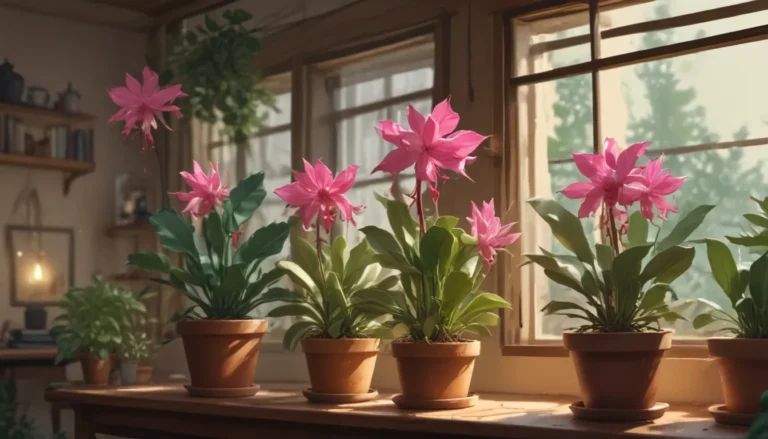A Comprehensive Guide to Growing Greig’s Tulips

Tulips are a beloved addition to any garden, but with so many varieties available, it can be overwhelming to choose the right one. If you’re looking for a low-growing tulip that provides long-lasting interest with both foliage and flowers, then Greig’s tulip, or Tulipa greigii, may be the perfect option for you.
In this detailed guide, we’ll dive into the world of Greig’s tulips, exploring everything from their cultivation and history to propagation, growing tips, maintenance, and more. Whether you’re a seasoned gardener or just starting out, this guide has valuable information to help you successfully grow and enjoy these beautiful flowers in your garden.
What Is Greig’s Tulip?
Greig’s tulips belong to the Tulipa greigii species and are known for their unique characteristics. These plants typically grow to about a foot tall, producing single, cup-shaped flowers in various colors such as red, salmon, yellow, orange, white, or a combination. The leaves of Greig’s tulips are variegated with a striking green and reddish-purple pattern, adding to their visual appeal.
Unlike some other tulip varieties, Greig’s tulips are smaller in size but pack a punch with their vibrant colors and distinctive foliage. Originating from Kyrgyzstan in the North and West Tien Shan mountains, these tulips are a delightful addition to any garden setting.
Cultivation and History
First identified in Turkestan and later described by botanist Eduard August von Regel in 1877, Greig’s tulip has a rich history dating back to its introduction into commercial cultivation. The name “Greig” in Tulipa greigii is a reference to Samuel Greig, a prominent figure in Russian history.
When it comes to growing Greig’s tulips, proper cultivation is key. These plants thrive in loamy, loose, or slightly sandy soil and should be planted in the fall for early spring blossoms. With specific soil requirements and planting depths, it’s essential to prepare your garden bed accordingly to ensure optimal growth and blooming.
Greig’s Tulip Propagation
Propagation of Greig’s tulips involves planting bulbs in well-draining soil with adequate sunlight. Bulbs should be spaced apart to allow for proper growth and development. Over time, you can divide the bulbs to encourage healthy plant reproduction and maintain a vibrant garden display.
How to Grow Greig’s Tulips
To successfully grow Greig’s tulips, it’s important to provide them with full sun exposure and well-draining, nutrient-rich soil. These plants bloom best when they receive six or more hours of sunlight per day, ensuring robust flowering and foliage growth.
Proper watering, fertilization, and maintenance are crucial for the health of Greig’s tulips. By following specific growing tips, such as planting in full sun, watering only when the soil has dried out, and feeding with granular fertilizer in the fall, you can encourage healthy growth and vibrant blooms.
Pruning and Maintenance
After the flowers of Greig’s tulips have faded, it’s essential to remove the flower stalks and wait until the leaves turn yellow or brown before pruning. Leaves provide essential nutrients to sustain the bulbs, so it’s important not to remove them prematurely. By properly maintaining and caring for your Greig’s tulips, you can ensure long-term plant health and vitality.
Greig’s Tulip Cultivars to Select
There are several cultivars of Greig’s tulips available, each offering unique colors and characteristics. From apricot petals in ‘Cape Cod’ to lemon yellow flowers with hints of salmon pink in ‘Easter Surprise,’ there’s a wide range of options to choose from. Selecting the right cultivars for your garden can enhance visual appeal and create a stunning display of colors and patterns.
Managing Pests and Disease
Like many garden plants, Greig’s tulips are susceptible to pests and diseases that can impact their growth and overall health. From herbivores like deer and voles to common pests such as aphids and slugs, it’s important to be proactive in managing these issues to protect your plants.
By implementing strategies to deter herbivores, control pests, and prevent diseases like Botrytis blight, you can safeguard the health of your Greig’s tulips and ensure they thrive in your garden. From exclusion techniques for deer to using organic slug bait for slugs and snails, there are various methods to protect your plants and promote their growth.
Best Uses for Greig’s Tulips
Greig’s tulips have versatile applications in the garden, whether they’re grown in containers, rock gardens, cut flower arrangements, or mass plantings. These tulips can be enjoyed in various settings and offer a burst of color and beauty in early spring. By incorporating Greig’s tulips into your garden design and pairing them with compatible companion plants, you can create a visually stunning and harmonious landscape.
Quick Reference Growing Guide
- Plant Type: Perennial flowering bulb
- Flower / Foliage Color: Red, pink, yellow, white, bicolored/green, variegated
- Native to: Kyrgyzstan
- Water Needs: Moderate
- Hardiness (USDA Zone): 3b-8a
- Maintenance: Low
- Bloom Time / Season: Spring
- Tolerance: Light frost, some drought
- Time to Maturity: 1 year
- Soil Type: Loose, rich, slightly sandy
- Exposure: Full sun
- Soil pH: 6.0-6.5
- Spacing: 6 inches
- Soil Drainage: Well-draining
- Planting Depth: 4 inches
- Companion Planting: Cosmos, petunias, phlox, sweet alyssum, zinnias
- Height: 12 inches
- Avoid Planting With: Deep-rooted perennials
- Spread: 4 inches
- Family: Liliaceae
- Growth Rate: Fast
- Genus: Tulipa
- Common Pests and Diseases: Aphids, deer, mice, squirrels, voles; tulip fire
- Species: Greigii
Greig’s tulips are a delightful addition to any garden, offering vibrant colors, distinctive foliage, and easy care. By following the tips and guidelines outlined in this comprehensive guide, you can successfully grow and enjoy these beautiful flowers in your own garden. Whether you’re a novice gardener or seasoned enthusiast, Greig’s tulips are sure to bring joy and beauty to your outdoor space.





